by Julie McConnell | Apr 13, 2015

New foliage of Japanese Plum Yew Photo credit: Julie McConnell, UF/IFAS
Trying to grow turfgrass in shaded areas is a losing battle but that doesn’t mean you have to settle for mulch in those dark areas of the landscape. There are many plants that will tolerate shady conditions found under the canopy of large trees, and some offer year round interest!
One of the most important aspects of site assessment is sun exposure. Plants need light, but do not all need the same amount or intensity.
If plants requiring full sun are planted in the shade, they tend to get leggy and do not flower well. Although they may live, they will not perform at their peak.
Shade loving plants grown in the sun may be stunted, show leaf scorch, and will struggle. Most shade plants can tolerate some filtered light or morning sun, but need to be protected from direct mid-day to afternoon sun.
So, what evergreen plants can add some color and texture to your shaded spots?
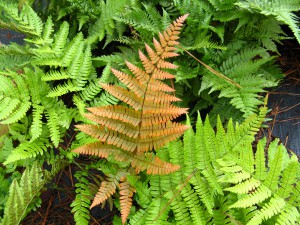
Golden tones of new foliage is what gives Autumn Fern its common name. Photo credit: Julie McConnell, UF/IFAS
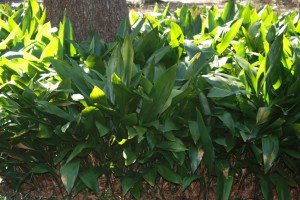
Cast Iron Plants under a live oak tree. Photo credit: Julie McConnell, UF/IFAS
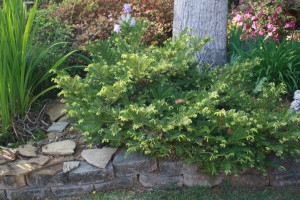
Japanese Plum Yew. Photo credit: Julie McConnell, UF/IFAS
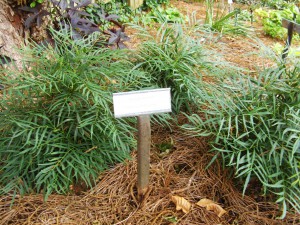
Soft Caress Mahonia. Photo Credit: Julie McConnell, UF/IFAS
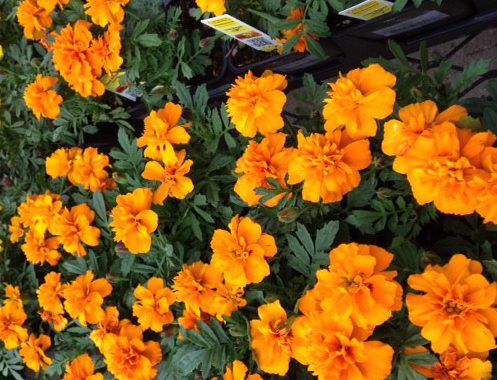
by Julie McConnell | Mar 10, 2015
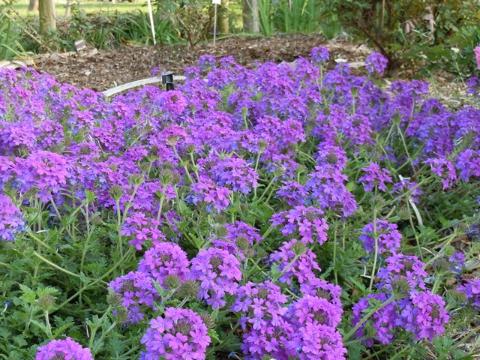
Verbena in full bloom. Image Credit: David W. Marshall, UF / IFAS
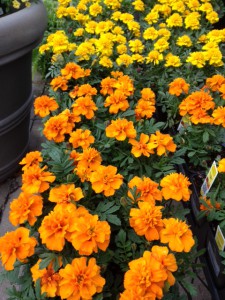
Marigold
As the weather warms and we approach the last expected frost date, it’s time to start planning our warm season annuals.
Annuals are plants that complete their life cycle in one season. In North Florida, we recognize two annual color seasons: Winter annuals (cool season) and Summer annuals (warm season).
Warm season annuals generally cannot tolerate freezing temperatures and perform best during the long, hot days of spring and summer. In our climate we have many choices for our warm season or summer color beds.
It is an extremely important part of the planning process to determine if the site is shaded, part sun, or full sun. If it is part sun, note whether plants will receive direct sunlight in the morning or afternoon and how many hours of sunlight are expected. Check water sources for the site. Different plants have different water needs, so you would not want to install plants with high water needs in a site with no irrigation or limited access to water.
Another factor to consider in coastal areas is the possibility of salt spray or introduction through water sources. Some plants can tolerate salt and others are very sensitive. If it is likely that plants may be exposed to salt, choose plants with a medium to high salt tolerance level.
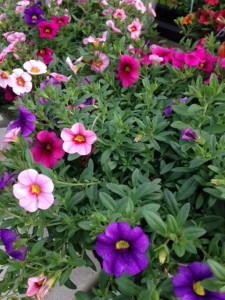
Calibrachoa
After you have assessed your site and determined what conditions will affect your plants, start with your plant selection.
Remember to group plants with similar needs together so that maintenance will be simpler and your plants will have the greatest opportunity to perform at their best. Most annuals will have some fertilizer needs due to their short life cycle. Be sure to amend the soil and provide slow release fertilizer throughout the growing season at the rate needed by your chosen plants. Do not apply fertilizer to plants that are suffering from drought stress, insect infestation, or disease infection.
When selecting plants from a garden center, look for healthy plants with well-developed root systems. If you pull the plant out of the pot you should be able to see bright white roots that are holding the soil together to the shape of the pot. If the root ball falls apart,the plant is not fully rooted and may struggle to get established. Look for disease, weed, and insect free plants so that you do not introduce a problem into your landscape.
To learn more about see Gardening with Annuals in Florida.
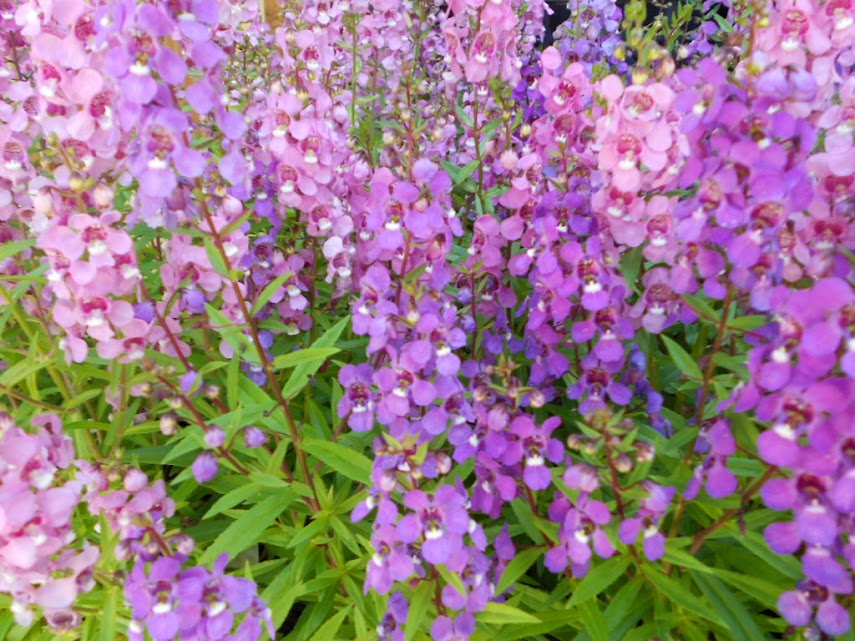
Agelonia
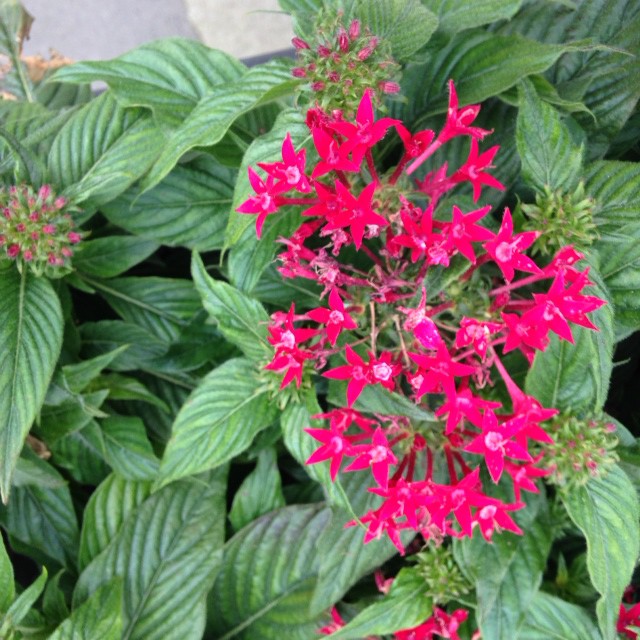
Pentas
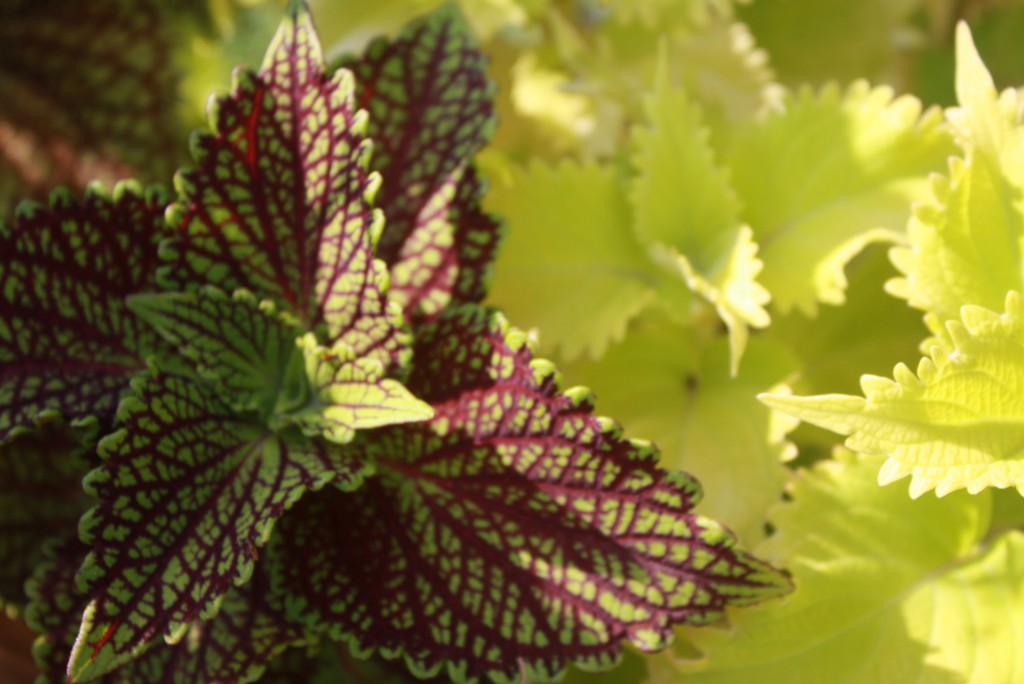
Coleus
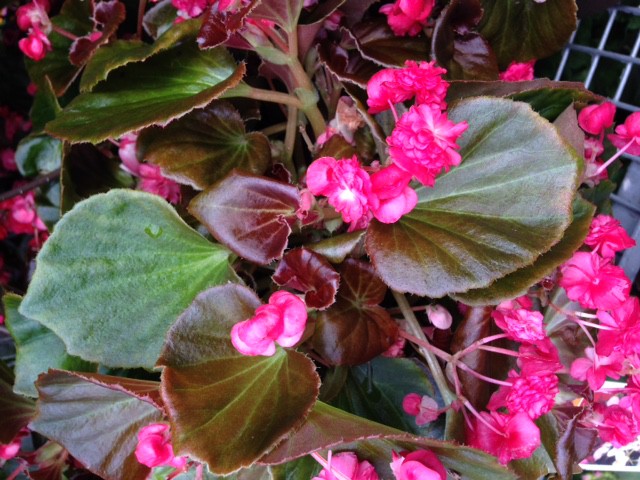
Begonia
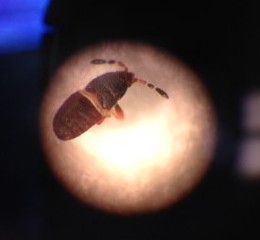
by Julie McConnell | Feb 10, 2015
When talking about pest issues in the landscape, green industry professionals often refer to IPM or Integrated Pest Management.

Chinch bug damage to St. Augustinegrass. Photo: Julie McConnell, UF/IFAS
So what is IPM and why should it be used?
IPM is a combination of methods used to manage pests that has the least harmful effect on non-target organisms and the environment. The four categories of IPM are:
-
cultural practices
-
biological control
-
mechanical/physical
-
chemical control
There is not one perfect IPM plan for all landscape situations, but there are some key components to help develop one for any situation.
- Prevent pest problems – choose the Right Plant for the Right Place! Proper planting technique, choosing resistant cultivars, and good maintenance all contribute to overall health and can influence how likely plants are to survive disease, insect, or weed invasions.
- Scout for pests/damage – understand what pests are likely to target common landscape plants. For example, St. Augustinegrass is susceptible to attack by chinch bugs; know what to look for to spot an infestation early.
- Accurately identify the pest – it’s okay to ask for help with this! Your county extension office is a great place to start for both identification and control recommendations. Many times treatments are applied for the wrong pest and that is a waste of your time and money and it can make it harder to get a correct diagnosis.
- Follow control action guidelines – have a plan in place for threshold tolerance. How many pests/amount of damage is okay before

Chinch bug nymph. Photo: Julie McConnell, UF/IFAS
action is taken? What action will you take? Use least toxic methods first and combine the four methods listed above. If using chemicals, know how they work (mode of action) and be sure to rotate properly to prevent resistance.
- Evaluate and revise – continued scouting for pests will indicate if the method is working. Keep records so that you can make changes that will increase effectiveness.
If you are interested in learning more about Integrated Pest Management, visit the IPM Florida website .

by Julie McConnell | Jan 13, 2015

This dead oak tree was trimmed up to make it neater. It is ready for a wildlife resident! Photo: JMcConnell, UF/IFAS
One of the management issues that any landowner will face at some point is what to do when a tree dies in the landscape. The logical response is “cut it down,” but depending on the location and the size of the tree, that may not be necessary and you could be removing potential wildlife habitat.
With any other major decisions about your landscape, always consider safety first. If the tree is in a location where it could damage property or cause harm to people or domesticated animals then it should be properly removed. But what about those trees that are along wood lines or in the far reaches of the yard and not threatening person or property?
Consider leaving the entire tree or modifying it to make it more aesthetically pleasing yet still useful to wildlife. Weak branches or unstable tops may be removed to make the snag less of a risk or to look a little neater.
Some examples of animals that may use dead trees in the landscape are birds, bats, squirrels, frogs, and lizards. Besides the obvious cavity dwelling creatures such as woodpeckers, owls, and bats that are attracted to decaying trees, other animals will be drawn for other reasons. Dead trees in the landscape will become inhabited by insects and fungi which are terrific food sources for birds, mammals, amphibians, and reptiles!
To learn more about providing wildlife habitats in your landscape, please see the EDIS publications listed below or contact your local extension office.
Helping Cavity-nesters in Florida
A Birds-Eye View: How Birds Select Habitat
Dead Wood: Key to Enhancing Wildlife Diversity in Forests

by Julie McConnell | Dec 2, 2014

Over-pruning. Photo credit: JB McConnell, UF/IFAS
Many people picture sugar sand beaches, emerald green water, and gorgeous palm trees swaying in the breeze when they think about visiting or moving to Florida. The panhandle offers the beautiful Gulf of Mexico and sugar sand beaches, but sometimes its palms look a bit deficient. Why is that and what will it take to correct this? Although it seems counter-intuitive, major improvements can result from providing less attention to the palms by reducing the amount of pruning.
Over pruning palms leads to nutrient deficiencies and increases the likelihood of insect and disease problems. Pictured at left is an example of over pruned palms. This technique leaves the heads looking spindly and unattractive, and also hurts the palm’s short-term and long-term health. So, why do property owners send someone up a ladder to harm their palms? Most likely a combination of misinformation and routine.
Palms should have a 360 degree canopy, for example if the top of your palm tree is a clock (with hands, not digital!) you would not prune any fronds above 3 and 9 o’clock. The palms pictured above are pruned in a range from 11-1 o’clock and 10-2 o’clock.
Why does it matter how many fronds are on the palm?
- First off, palms are not trees as many people believe, but instead are grasses. Palms have just one growing point that is located at the top of the trunk, and this one bud called the apical meristem is busy making fronds that will not appear until several months from now.
- When nutrients are not available in the soil it can take 4-6 months for a deficiency to show up, so palm nutrition is tricky. Although they grow differently than trees and shrubs, one commonality is that they produce food through photosynthesis and need all available green tissue to make this happen.
- When there are fewer fronds, the palm has limited resources to create energy.
Native Florida soils are not able to meet the specific nutrition needs of most palms, so it is common to see nutrient deficiencies. Some nutrients such as nitrogen, potassium, and magnesium are mobile in the plant. This means that they can be moved to areas with sufficient amounts of the nutrient to other parts of the palm that do not have enough. This will cause some partial discoloration in leaves, which can be misinterpreted as a dying leaf when in reality it is just sharing food with the rest of the palm. If that frond has any green tissue remaining and is cut off, then a great source of nutrients has just been removed thus making the overall deficiency even worse!
What about “hurricane-cut” to improve wind resistance?
- Another common myth is that making a “hurricane cut” will reduce the likelihood of trees breaking in storms. Observations after the hurricane seasons of 2004 and 2005 along with research by scientists have shown that the opposite is actually true. Trees that had been given a “hurricane-cut” were more likely to have their crowns snapped than palms with full crowns.
- Damaged or dead fronds should be removed before storms to prevent them from becoming airborne during a storm, but green leaves should remain on palms.
So, how do you know the difference between normal shedding of fronds and a deficiency?
- Normal shedding (senescence) is indicated by an overall discoloration of the whole frond, not just sections, and the whole process of turning color and falling off (or hanging down depending on the palm) only takes a couple of days.
- A gradual shift to yellowing, browning, abnormal growth or other similar symptoms are typically nutrition related.
Above are some examples of common nutrient deficiencies found in Florida landscapes. These are examples of leaves that are still supporting the palm and should be left attached to the tree until the whole frond is brown.
For more information on proper pruning and nutrient deficiencies of palms, please see the publications indicated below.
Nutrient Deficiencies of Landscape and Field-Grown Palms in Florida
Pruning Palms



















